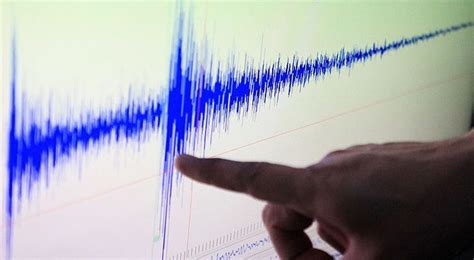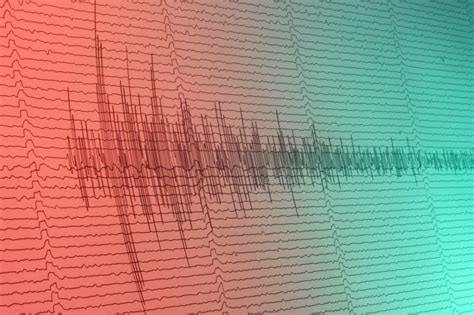
Earthquake Updates
Earthquake Activity Today
Seismic activity is a constant process, and earthquakes, or “sismos” and “temblores” as they are known in Spanish, occur daily around the world. Keeping informed about these events is crucial, particularly in regions prone to earthquakes.
Recent Earthquakes
Providing specific information about today’s earthquakes requires access to real-time data sources. Several organizations track and report on seismic activity worldwide. These include:
- The United States Geological Survey (USGS): The USGS is a primary source for earthquake information globally. Their website (usgs.gov) provides maps, lists of recent earthquakes, and information about earthquake hazards.
- The European-Mediterranean Seismological Centre (EMSC): The EMSC focuses on earthquakes in Europe and the Mediterranean region. Their website (emsc-csem.org) offers real-time earthquake information and a user-friendly interface.
- Local Seismic Networks: Many countries and regions have their own seismic monitoring networks. These networks provide more localized and detailed information about earthquakes in their specific area. For example, Mexico has the Servicio Sismológico Nacional (SSN).
When checking for recent earthquakes, pay attention to the following information:
- Magnitude: This measures the energy released by the earthquake. The Richter scale is commonly used, though the moment magnitude scale is more accurate for larger earthquakes.
- Location: The coordinates of the epicenter, the point on the Earth’s surface directly above the earthquake’s origin.
- Depth: The depth of the earthquake’s focus (the point of origin underground). Shallow earthquakes (less than 70 km deep) tend to cause more damage.
- Time: The date and time the earthquake occurred (usually reported in UTC).
Understanding Earthquake Impacts
The impact of an earthquake depends on several factors, including magnitude, depth, distance from populated areas, and the type of ground. Higher magnitude earthquakes closer to the surface and near cities are more likely to cause significant damage.
Potential effects include:
- Ground shaking: The primary cause of damage to buildings and infrastructure.
- Landslides: Earthquakes can trigger landslides, particularly in mountainous regions.
- Tsunamis: Large earthquakes under the ocean can generate tsunamis, which can cause widespread destruction along coastlines.
- Aftershocks: Smaller earthquakes that follow the main shock. These can continue for days, weeks, or even months.
Staying Informed and Prepared
It is essential to stay informed about earthquake risks in your area and take appropriate preparedness measures. This includes:
- Knowing the earthquake safety procedures (drop, cover, and hold on).
- Securing furniture and other objects that could fall during an earthquake.
- Having an emergency kit with essential supplies.
- Familiarizing yourself with evacuation routes.
By staying informed and prepared, you can significantly reduce your risk of injury or loss in the event of an earthquake.
 0 x 0 temblor hoy de febrero de cuanto fue el sismo de hoy en mexico from larepublica.pe
0 x 0 temblor hoy de febrero de cuanto fue el sismo de hoy en mexico from larepublica.pe
 640×371 temblor hoy de marzo de cuanto fue el sismo de hoy en mexico from larepublica.pe
640×371 temblor hoy de marzo de cuanto fue el sismo de hoy en mexico from larepublica.pe
 1200×685 sismo se registra hoy jueves en la zona norte del pais horas from www.24horas.cl
1200×685 sismo se registra hoy jueves en la zona norte del pais horas from www.24horas.cl
 0 x 0 temblor hoy en chile de cuanto fue el sismo de hoy domingo de from larepublica.pe
0 x 0 temblor hoy en chile de cuanto fue el sismo de hoy domingo de from larepublica.pe
 1200×578 temblor en cobquecura hoy de agosto sismo de remecio chile from larepublica.pe
1200×578 temblor en cobquecura hoy de agosto sismo de remecio chile from larepublica.pe
 1200×747 temblor hoy se reporta sismo en xochimilco en cdmx from www.mediotiempo.com
1200×747 temblor hoy se reporta sismo en xochimilco en cdmx from www.mediotiempo.com
 1280×720 temblor en colombia hoy en vivo sismo en la noche del de from www.semana.com
1280×720 temblor en colombia hoy en vivo sismo en la noche del de from www.semana.com
 0 x 0 temblor hoy en chile de cuanto fue el sismo de hoy viernes de from larepublica.pe
0 x 0 temblor hoy en chile de cuanto fue el sismo de hoy viernes de from larepublica.pe
 1200×630 temblor en colombia hoy de agosto sismo de remecio colombia from larepublica.pe
1200×630 temblor en colombia hoy de agosto sismo de remecio colombia from larepublica.pe
 1200×747 temblor hoy de febrero sismo en mexico al momento from www.mediotiempo.com
1200×747 temblor hoy de febrero sismo en mexico al momento from www.mediotiempo.com
 1058×571 temblor hoy en santander nuevo sismo en colombia este viernes de agosto from www.pulzo.com
1058×571 temblor hoy en santander nuevo sismo en colombia este viernes de agosto from www.pulzo.com
 1200×660 temblor hoy de febrero en colombia donde fue el epicentro de from larepublica.pe
1200×660 temblor hoy de febrero en colombia donde fue el epicentro de from larepublica.pe
 1200×630 ultimo temblor hoy de mayo en colombia donde fue el epicentro from larepublica.pe
1200×630 ultimo temblor hoy de mayo en colombia donde fue el epicentro from larepublica.pe
 1280×1652 temblor en colombia en vivo sismo de hoy domingo de abril from www.elpais.com.co
1280×1652 temblor en colombia en vivo sismo de hoy domingo de abril from www.elpais.com.co
 502×849 temblor hoy sismo de grados epicentro en guerrero se siente from www.informador.mx
502×849 temblor hoy sismo de grados epicentro en guerrero se siente from www.informador.mx
 1640×924 temblor hoy en peru de agosto horario epicentro del ultimo sismo from latinanoticias.pe
1640×924 temblor hoy en peru de agosto horario epicentro del ultimo sismo from latinanoticias.pe
 824×464 historial de reportes de sismos magnitud epicentro al cierre del hoy from rpp.pe
824×464 historial de reportes de sismos magnitud epicentro al cierre del hoy from rpp.pe
 655×360 temblor hoy en peru de octubre horario epicentro magnitud del from latinanoticias.pe
655×360 temblor hoy en peru de octubre horario epicentro magnitud del from latinanoticias.pe
 655×360 temblor hoy en peru de septiembre horario epicentro magnitud from latinanoticias.pe
655×360 temblor hoy en peru de septiembre horario epicentro magnitud from latinanoticias.pe
 980×528 temblor en colombia hoy de febrero epicentro hora magnitud del from gestion.pe
980×528 temblor en colombia hoy de febrero epicentro hora magnitud del from gestion.pe
 1200×628 sismo en lima conoce la magnitud hora exacta del temblor de hoy from www.apnoticias.pe
1200×628 sismo en lima conoce la magnitud hora exacta del temblor de hoy from www.apnoticias.pe
 1200×600 temblor hoy en colombia magnitud epicentro del sismo reportado hoy from www.eltiempo.com
1200×600 temblor hoy en colombia magnitud epicentro del sismo reportado hoy from www.eltiempo.com
 980×528 lo ultimo del reporte de temblor en peru peru el comercio peru from elcomercio.pe
980×528 lo ultimo del reporte de temblor en peru peru el comercio peru from elcomercio.pe
 1280×720 en vivo temblor en colombia hoy de septiembre epicentro from www.elpais.com.co
1280×720 en vivo temblor en colombia hoy de septiembre epicentro from www.elpais.com.co
 640×371 temblor hoy de agosto de cuanto fue el sismo de hoy en mexico from larepublica.pe
640×371 temblor hoy de agosto de cuanto fue el sismo de hoy en mexico from larepublica.pe
 1280×853 en vivo temblor en colombia hoy lunes de octubre epicentro from www.elpais.com.co
1280×853 en vivo temblor en colombia hoy lunes de octubre epicentro from www.elpais.com.co
 640×371 temblor hoy en chile de cuanto fue el sismo de hoy sabado de from larepublica.pe
640×371 temblor hoy en chile de cuanto fue el sismo de hoy sabado de from larepublica.pe
 1200×1023 temblor hoy de septiembre en colombia donde fue el epicentro de from larepublica.pe
1200×1023 temblor hoy de septiembre en colombia donde fue el epicentro de from larepublica.pe
 500×522 temblor en colombia hoy de octubre reporte de los ultimos sismos from elcomercio.pe
500×522 temblor en colombia hoy de octubre reporte de los ultimos sismos from elcomercio.pe
 1200×630 temblor hoy de agosto en colombia donde fue el epicentro de from larepublica.pe
1200×630 temblor hoy de agosto en colombia donde fue el epicentro de from larepublica.pe
 474×266 hoy temblor en chile segun csn ultimo sismo donde fue este domingo from elcomercio.pe
474×266 hoy temblor en chile segun csn ultimo sismo donde fue este domingo from elcomercio.pe
 0 x 0 temblor hoy en colombia de febrero epicentro magnitud del ultimo from larepublica.pe
0 x 0 temblor hoy en colombia de febrero epicentro magnitud del ultimo from larepublica.pe
 1200×735 temblor en chile hoy de mayo epicentro magnitud del ultimo sismo from larepublica.pe
1200×735 temblor en chile hoy de mayo epicentro magnitud del ultimo sismo from larepublica.pe